
One of my favourite collecting spots is the howlite locality at Iona, Cape Breton Island, Nova Scotia. It is the only place in the world where you can collect superb, macro howlite crystals. Note that the type locality is near Windsor, Hants County, Nova Scotia. This is a different locality.
On a good day, this locality is absolutely gorgeous with aquamarine, crystal-clear, blue water, white gypsum cliffs and great howlite crystals. On a bad day, especially when the wind is blowing from the south or south west, the locality is a dangerous, miserable spot where you are pounded by 1-1.5m waves. Collecting is impossible in these conditions. The thing is, it can change from beautiful to torturous in a matter of minutes. I’ve seen it happen several times!
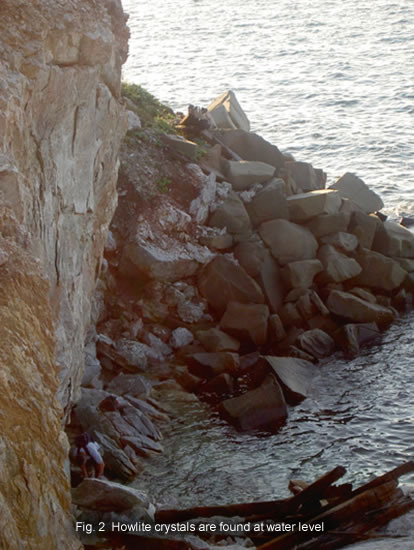
The deposit at Iona is unique. At Iona, a large bed of gypsum/anhydrite outcrops on Bras d'Or Lake as a white cliff about 17m high, within beds of other assorted sediments. These white cliffs, at the base, are solid, hard, blue-grey anhydrite. When touched by seawater, the anhydrite rapidly turns into gypsum, one of the softest, flakiest minerals known. As the waters of Bras d'Or Lake wash against the white cliff at Iona, it is continually changes the anhydrite to gypsum which subsequently flakes off due to the continuous massaging of the water. Over time, the white cliff is undermined and every few years, small or larger portions of the cliff tumble down into the ocean. The remnants of the cliff, as boulders of gypsum or anhydrite are slowly broken down by the same waters that undermined them. Eventually all traces of the caved cliff are gone and the water begins to undermine the cliff, again. This same mechanism is the mechanism that reveals the howlite crystals and enables us to collect them.
The howlite crystals are embedded in sold anhydrite. When they are in the anhydrite, if you can find any, they are un-extractable. They are extremely fragile and the anhydrite is extremely hard. At water level and only at water level the process to reveal the howlite crystals takes place. As the water in the Bras Dor Lake laps against the boulders in the water or the cliff face, it gently converts the anhydrite to gypsum which is subsequently knocked off of the rock surface by the wave action and presumably dissolved. If howlite crystals are present, then they are slowly and delicately exposed to the air. The clusters start out as a single termination poking out of the anhydrite. Slowly, as the anhydrite/gypsum is removed by wave action more and more of the howlite is revealed until a beautiful cluster of howlite crystals is exposed. The process continues until the cluster of howlite is totally exposed and then falls off into the water to be ground up between the rocks n the water. This process is continuous and unstoppable.
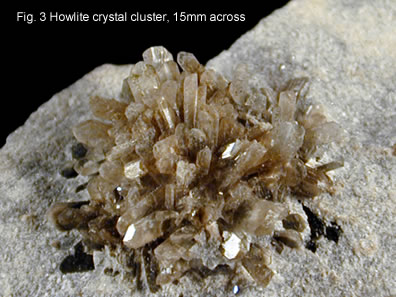
Most people are used to seeing howlite as rounded, cauliflower-shaped, compact masses or nodules. These masses are often compact enough to be used for lapidary purposes. There are crystals of howlite found at Tick Canyon, California (Murdoch, 1957) but they are sub-millimeter in size. The howlite crystals at Iona are very different and are the world’s finest.
Howlite occurs at the Iona locality, mostly as radiating clusters of howlite crystals up to 19mm in length and several mm wide. The crystals are show several forms including two monoclinic prisms and two pinacoids. Crystals range in colour and clarity from perfectly colourless and transparent to opaque grey-chocolate brown, presumably coloured by clay or anhydrite/gypsum inclusions and possibly hydrocarbons. Interestingly, the size of the crystals enabled proper hardness tests to be done. Most references show howlite to have a hardness of 3.5 or so. Tests done on crystals of howlite from Iona reveal that howlite actually has a hardness of 6.5 (Joyce et al, 1993). This discrepancy could be because previous tests were done on the non-crystal, fine-grained nodules of howlite commonly found elsewhere.
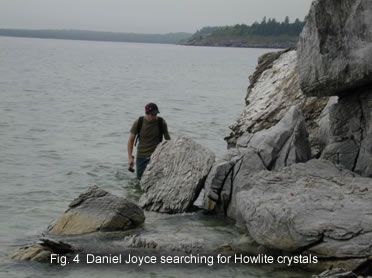
To collect howlite crystals you need to either wade in the water around the barren brown cliffs to the base of the white anhydrite/gypsum cliffs or scale the cliffs at a spot beside the railway tracks to access the water level where the howlite crystals are found. Both ways can be dangerous and should not be attempted unless you are fit and physically stable.
At sea level, you could find howlite crystal clusters attached to the anhydrite up to one metre or so above the water level. The tide at this locality is 0.33 of a metre or less and barely noticeable. Generally, the crystal clusters are sparse and usually well separated from each other. Crystals are collected by chiseling pieces of anhydrite off of the cliff face or off of boulders that sit in the water. There is no way to collect at this locality and stay dry. You must wade in the water to access the crystals.

Howlite crystals vary in size and delicacy. The clusters of larger, thicker crystals are very sturdy and can be wrapped and packed for transport. Most clusters, though, are composed of thin-bladed, delicate crystals that need to be carefully wrapped and transported to ensure that the crystals are not damaged. I generally try to trim the specimens on-site so that I can pack each in its own container, so that the crystals are not touched by wrapping materials.
The location at Iona is beautiful and is the location of the worlds best howlite crystals. It can also be a dangerous place of steep cliffs buffeted by high winds and waves. Timed right, a visit to Iona can be a great collecting experience.

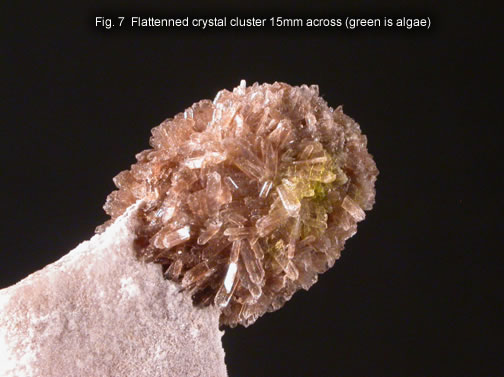

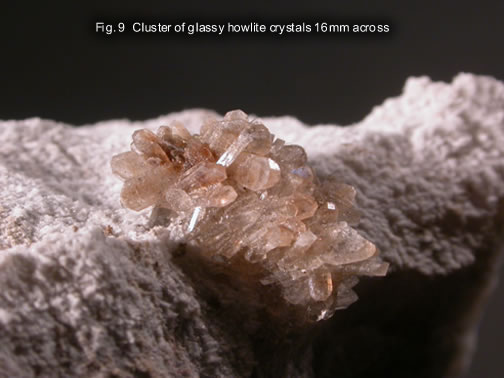
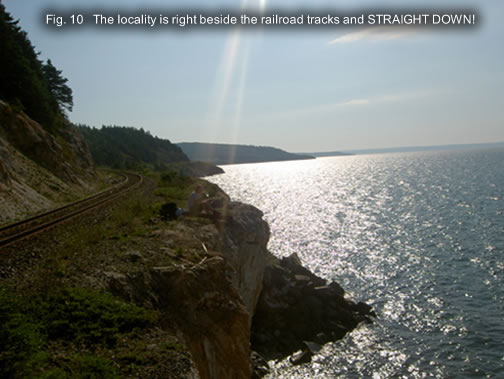

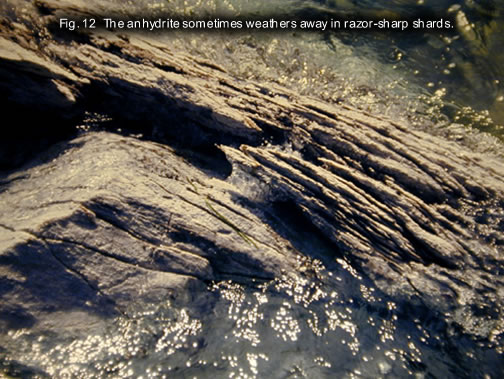


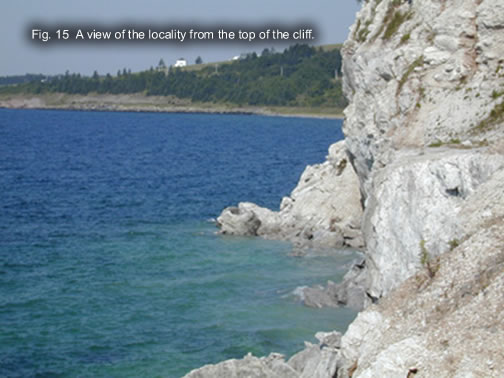
Joyce, D.K. Gait, R.I. and Sturman, B.D. (1993) Howlite from Iona, Nova Scotia Short paper presented at the Rochester Mineralogical Symposium, Rochester, New York, 1993
Murdoch, J. (1957) Crystallography and x-ray measurements of howlite from California, The American Mineralogist, 42, 521-524
Sabina, Ann P. (1964) Rocks and Minerals for he Collector: Bay of Fundy Area: New Brunswick-Nova Scotia. Geological Survey of Canada Paper 64-10